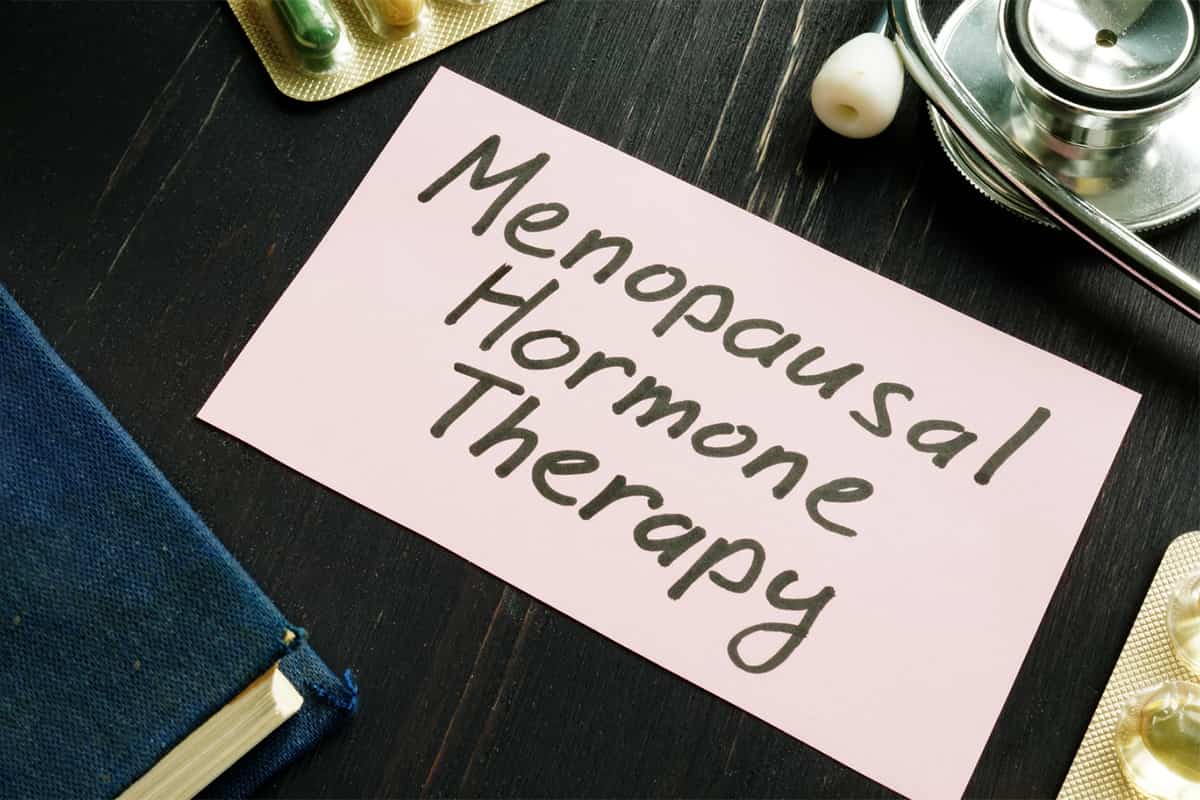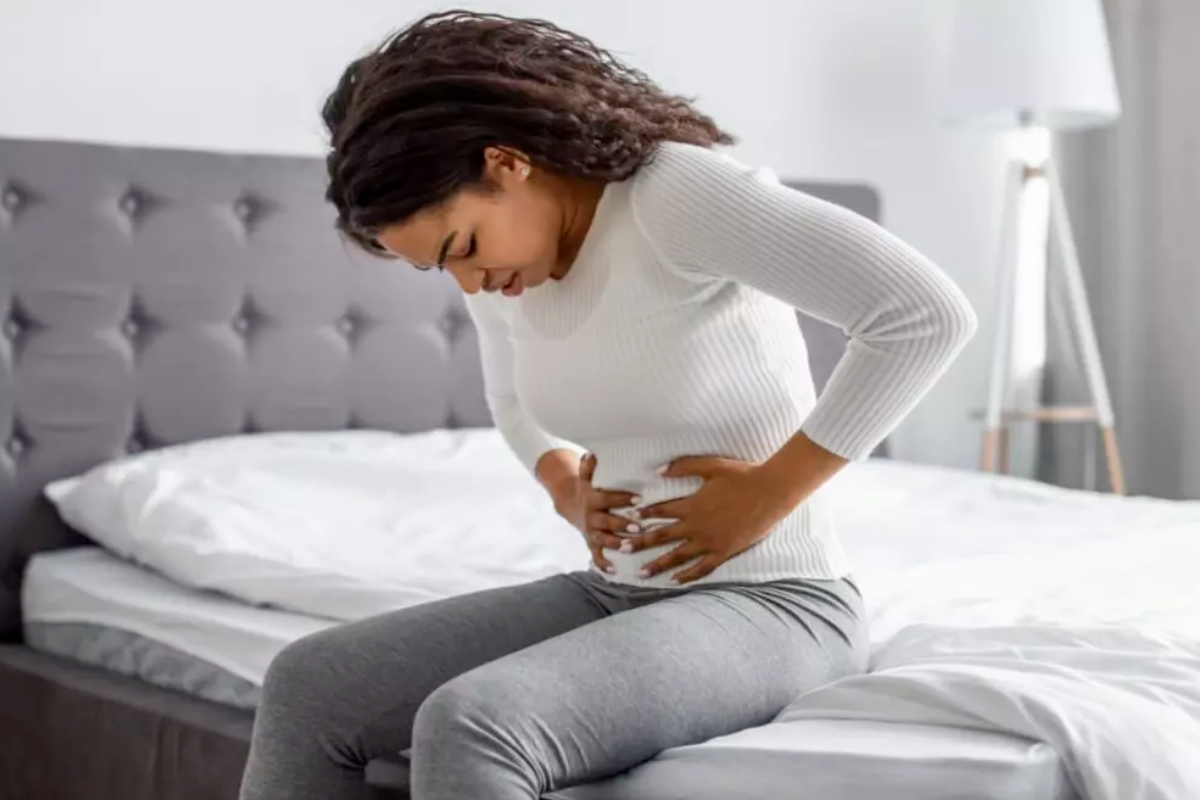An Expert Guide To Menopausal Hormone Therapy

If you are anxious about menopausal hormone therapy (MHT), we understand. There has been a lot of misinformation about the risks of MHT that has unfortunately led some women to avoid it.
As you learn more about MHT and talk to our coaches and experts, we hope you are able to keep an open mind and rest easy knowing we provide only the most up-to-date and scientifically reviewed information.
The most recent high-quality studies and the current position statement of the North American Menopause Society tell us that the benefits of MHT outweigh the risks for women who are:
- Healthy (not at high risk of serious health conditions)
- Younger than 60 and
- Within 10 years of menopause onset
We understand it’s not easy to unlearn a once-mainstream fear, so we are here to help you find the best management strategy.
Your Quick Introduction to MHT
MHT, previously known as hormone replacement therapy (HRT), is a treatment used to alleviate menopause symptoms, including hot flashes, night sweats, vaginal dryness and bone loss.
There are two types of MHT:
- Estrogen-progestogen therapy (EPT or Combination MHT): Given to women who still have their uterus.
- Estrogen therapy (ET): Given to women who have had their uterus removed (hysterectomy).
Why the difference?
If you have a uterus, progestogen protects your uterus’ inner lining from endometrial cancer and endometrial hyperplasia, an irregular thickening of the uterine lining. If you don’t have a uterus, estrogen alone suffices.
MHT comes in many forms: tablets, transdermal patches, sprays, gels, creams and vaginal rings. Your healthcare provider can help you choose the right form and dose of MHT for you.
The Risks and Benefits of MHT
Risks of MHT
Breast Cancer
It is true that MHT may slightly increase the risk of breast cancer, but it is important to put statistics into context.
Studies do show a very small increase in breast cancer risk that occurs after about four to five years of EPT use. Experts emphasize, however, that this increase in risk needs to be seen in a larger context. ET does not seem to increase breast cancer risk within seven years of use.
A recent study explained that the health risk of MHT is much lower than the health risk posed by obesity, inactivity and alcohol use.
Cardiovascular Disease (CVD)
Women are more prone to CVD than men. Some experts think the decreasing levels of estrogen and progesterone during menopause also contribute to a higher risk of CVD for women.
Studies show that CVD risk associated with MHT depends on when women start the therapy. If a woman starts MHT less than 10 years from menopause onset, there are no associated CVD risks. The risk increases for women who are more than 20 years from menopause onset.
You can mitigate these risk factors by talking to your clinician.
You can safely start MHT if your clinician deems that the benefits outweigh the risks for your particular circumstances.
Benefits of MHT
MHT has been shown to reduce hot flashes, vaginal dryness and bone loss. A study demonstrated a 75% decrease in weekly hot flash occurrences after starting MHT. Some women also report that MHT helps with sleep disturbance, mood swings, feelings of depression and joint pain.
The FDA also approved MHT to prevent bone loss, which may occur with the decline in estrogen during menopause. MHT has been shown to increase bone density by about 5% after two years of use, which then leads to a 30-40% reduction in hip and spinal fractures.
MHT and Weight Gain
The average woman gains about 2lbs per year between the ages of 45 and 55—but this is due to lifestyle changes and aging and not menopause. Age-related weight gain is due to people becoming more sedentary and their metabolisms slowing due to a loss of muscle mass.
Menopause-related hormone changes can contribute to increased levels of body fat relative to muscle, as well as increase the distribution of fat around your abdomen. MHT does not contribute to weight gain. However, it can decrease fat distribution around the belly.
When to Start and Stop MHT
Should I start MHT?
If you are:
- Healthy (MHT is not safe to take with some high-risk health conditions)
- Younger than 60 and
- Within 10 years of menopause onset
The North American Menopause Society recommends MHT for you to prevent bone loss or fracture and treat hot flashes and night sweats.
If you are experiencing vaginal dryness or painful sex, you should try over-the-counter products such as vaginal moisturizers and lubricants first before moving onto low-dose vaginal estrogen therapy. If neither of them work, you may consider MHT.
If you are:
- Between 10-20 years from menopause onset or
- Older than 60
You should discuss the benefit-risk ratio of using MHT with your healthcare provider.
A word of expert advice: Periodically reevaluate the effectiveness of MHT, especially if your hot flashes or bone loss continue while on MHT.
When to Stop MHT
There is no “right” time to stop MHT. The decision on when to stop should be discussed with a clinician. Women using MHT should check in with their healthcare provider every three to six months to decide how to proceed.
Hot flashes may or may not return after you stop MHT. Some believe gradually lowering the dose may prevent the return of hot flashes, but there are no definitive results to back this claim.
Common MHT Side Effects
If you decide to start MHT, especially EPT (estrogen-progestogen therapy), be on the lookout for:
- Breast tenderness
- Vaginal bleeding
- Mood changes
- Bloating
- Headache
You can address most side effects by adjusting the MHT dose and/or the delivery form. You may experience irregular bleeding on cyclic EPT, but you can switch to continuous EPT to avoid it.
Bioidentical Hormone Therapy
Bioidentical hormone therapy (BHT) uses hormones that come from plants, while traditional MHT is generally made from synthetic materials or animal products. While bioidenticals are often marketed as “natural,” they are still chemically processed in order to be effective as a medication for humans. Some forms of BHT are FDA-approved, while others—and any compounded BHT medications—are not.
Compounded BHT (cBHT)
BHT is often sold as a compounded medication (cBHT), meaning it is custom-formulated in different doses. A prescribing provider will test your hormone levels and then instruct a compounding pharmacy in what hormone doses to use.
While MHT is FDA-approved, cBHT does not fall under FDA jurisdiction and cannot be FDA-approved. Without a rigorous drug testing process, you can’t be sure of its safety or efficacy. Reports have also shown that actual cBHT medications can vary widely from what was actually prescribed.
In fact, the FDA attempted to ban cBHT twice in the past, yet the North American Menopause Society estimates that tens of millions of cBHT prescriptions are being written every year.
Who Should Use cBHT?
Experts agree that except in very specific circumstances of medical necessity, women should use only FDA-approved hormone therapy options.
Major organizations like the North American Menopause Society recommend that cBHT only be used in specific circumstances where FDA-approved products are medically inappropriate. For example, if someone has an allergy to an ingredient in an approved product, they may need to have their hormones compounded with a different formulation.
If you need to use cBHT for these reasons, be sure to check whether the pharmaceutical company that manufactured the formula is accredited by the Pharmacy Compounding Accreditation Board.
I’m Not Interested in MHT. What Else Can I Do?
Though MHT is a safe and effective option for many, we understand that you may not be ready for or able to take prescription medications. Even for those using MHT, experts recommend healthy lifestyle changes to both minimize menopause symptoms and maximize long term health. Midday equips you with holistic management tools to help you with symptom reduction and healthy aging.
Holistic Approaches
You can talk to your menopause coach on Midday about building a healthy lifestyle specific to you, but here is a quick overview of what lifestyle changes you can start thinking about:
- Manage your anxiety and stress with mindfulness practices. Studies show that meditation techniques can help reduce hot flashes and lower stress. We created science-backed meditations for you to listen to in our app, with several linked at the end of this section.
- Track your hot flash triggers. Understanding your hot flash triggers is the first step toward implementing behavioral changes that can lower the frequency and severity of hot flashes. Use Midday’s handy hot flash log to get an analysis of your hot flash patterns with helpful tips and support.
- Make dietary changes. Avoiding the foods and drinks that trigger your hot flashes can make a big impact on your symptoms. However, a plant-based diet and foods like soy and flaxseed have been shown to reduce hot flash severity for some women. Read more in the attached articles.
- Exercise. Research shows that incorporating moderate or high intensity cardiovascular exercise can improve your body’s ability to regulate its temperature. What’s more, exercise can powerfully improve your mood, decrease stress and anxiety and improve your sleep.
- Get seven to eight hours of quality sleep. We recognize hot flashes and many other lifestyle factors can get in the way of good sleep. That is why we created a guide for sleep best practices that you can start utilizing today.
Supplements
Although some companies claim supplements like black cohosh, red clover and ginseng can help relieve menopause symptoms, there is no clear scientific evidence to support their efficacy.
These supplements are not FDA-regulated, which means companies are not required to disclose ingredients and their amounts. For more on making safe supplement choices, check out the article 6 Tips for Choosing Safer Dietary Supplements.
Sign up for more unique women’s health content
By submitting this form, you agree to the Lisa Health Privacy Policy and Terms of Use


